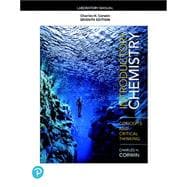For lab courses in introductory, preparatory, and basic chemistry.
Prepare introductory chemistry students for laboratory and provide a safe experience
Emphasizing environmental considerations, Corwin’s acclaimed Laboratory Manual for Introductory Chemistry offers a proven format of a pre-laboratory assignment, a stepwise procedure, and a post-laboratory assignment. More than 500,000 students to date in Introductory Chemistry, Preparatory Chemistry, and Allied Health Chemistry have used these experiments successfully. The 7th Edition continues to evolve with increased sensitivity to environmental and safety concerns in the laboratory. Recycle icons in the margin of each procedure alert students to recycle chemical waste and “green chemical” indicators remind students to use the appropriate waste containers provided to dispose of chemicals. Corwin’s lab manual can be packaged with any Pearson Intro Prep Chemistry book.











